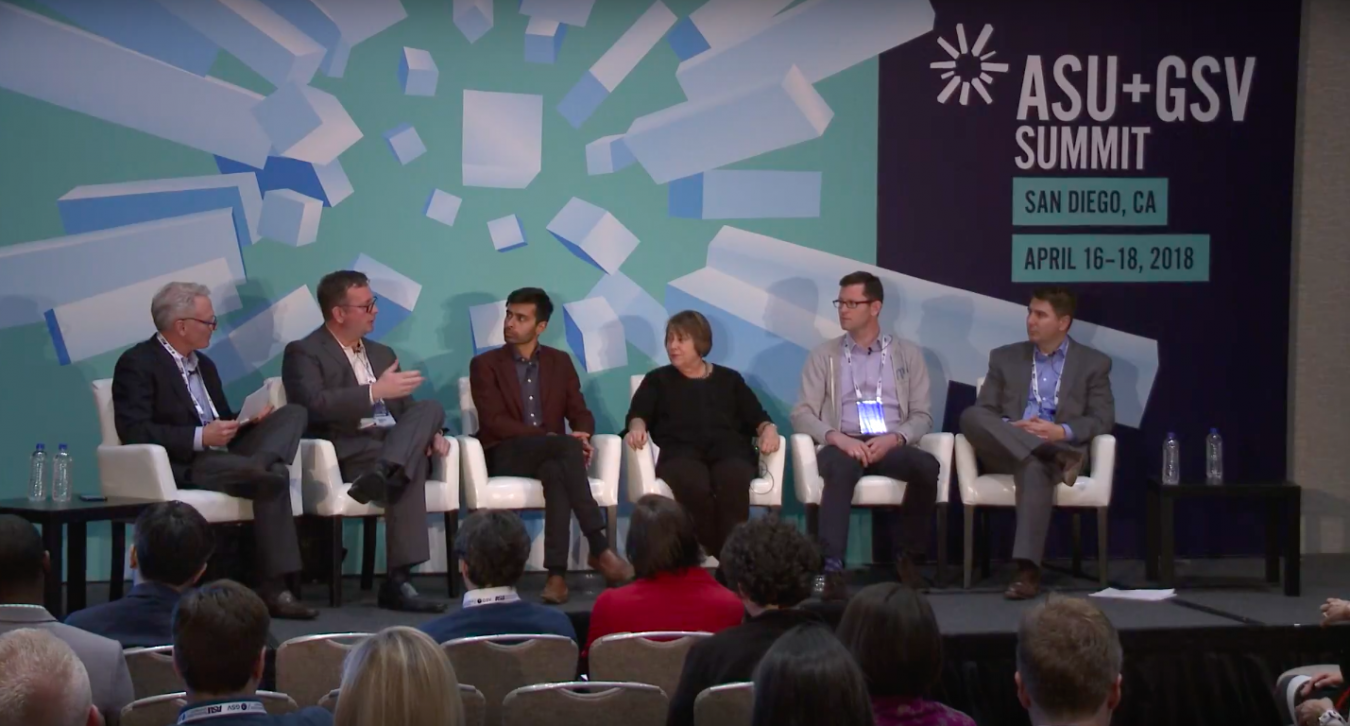
Articles
Industry Leaders Predict Income Share Agreements (ISAs) Will Grab One Quarter to Half of the Postsecondary Market
By Henry Kronk
April 24, 2018
“They’re like screen doors for a submarine.” That’s how Charles Trafton, a managing partner at Flowpoint Capital, described federal student loans at a recent panel at ASU GSV Summit 2018. The panel focused on a simple question: “Can income share agreements (ISAs) transform the cost and return-on-education?” The answer, for Trafton and panelists David Cooper (Purdue), Tonio DeSorrento (Vemo), and Martha Kanter (College Promise Campaign), was a resounding ‘probably.’ DeSorrento went so far to say that, within five years, roughly have of the 20 million postsecondary students in the U.S. to have ISAs as an option for funding their education.
What Are Income Share Agreements?
Income share agreements, in this context, are an alternative way to pay for college. An ISA agreement might go something like this: a student receives a given amount of funding to cover some (or in other cases, all) of their college tuition. After they graduate, and get a job, they pay a percentage of that income back to the college. If they get a high paying job, they end up paying a lot, and vice versa. The agreement expires after a given amount of time, usually five years. ISAs also do not accrue interest.
Still, income share agreements won’t make sense for everyone. Purdue caps their total payment at 2.5 times what was initially awarded to a student. That means that, if you end up earning a large salary out of college, you might end up paying much, much more than you would if you had taken out a loan. Still, the typical college graduate won’t fall into this category.
Purdue became the first major university to offer income share agreements in 2016. Since, many other institutes of higher learning, capital investment firms, and others have begun to test out the feasibility of ISAs. As evidenced by the recent ASU + GSV Summit panel, many are optimistic.
“I think it’s huge where this could go,” said Cooper. “If legislation continues to get passed, I think you’ll see the flood gates open.”
An Option that Ties Value to Education
One of the main criticisms of ISAs today is that they are largely unregulated. In 2017, Congress introduced two bills. The first would have capped the maximum amount a student could repay. The second would have banned colleges from collecting on a student’s income that falls below the poverty line. Neither made it out of the committee stage.
Protecting students is always a concern, especially those who stand to gain the most from ISAs (namely learners from lower-income families). Some have even likened the agreement to indentured servitude. But according to Trafton, the federal government has already gotten into the ISA market.
“On the regulatory front, Pay-As-You-Learn started out as a federal cure for default,” Trafton said. “The ISA model has been in use by the federal government. Our premise is, ‘don’t take a loan in the first place.”
“Our strong preference for all of our deals is for the school to retain a piece of equity in the ISA. So they have an incentive down the road for student success rather than us just buying the ISA from the school.”
But there’s another hitch standing in the way of widespread adoption: different programs result in different salaries.
“In order for us to place a financial value on these schools, we have to know what happens when people leave,” Trafton said.
“You’ve got to be careful of averages,” Trafton said. “You can get killed betting on averages in programs like this.” The graduates of a given university in a given year will earn a wide range of salaries following graduation. Looking at individual programs, the standard deviation is much lower. “I find it fascinating that a four-year university will charge the same tuition and fees for any major,” Trafton said, “whether you’re a poetry major or an engineering major. And yet the ISA terms can be very different. I think this is the first step in tying value to the cost of education.”
In a climate where the rising availability of federal loans have driven up the cost of college education, ISAs stand as a potential cure for the fever.
Cover Image: Global Silicon Valley.









[…] Learning Officers (CLOs) walk a fine line between business and learning. They need to keep the needs of Learning and Development (L&D) departments top of mind. But at the same time, they need to justify how learning meets business […]